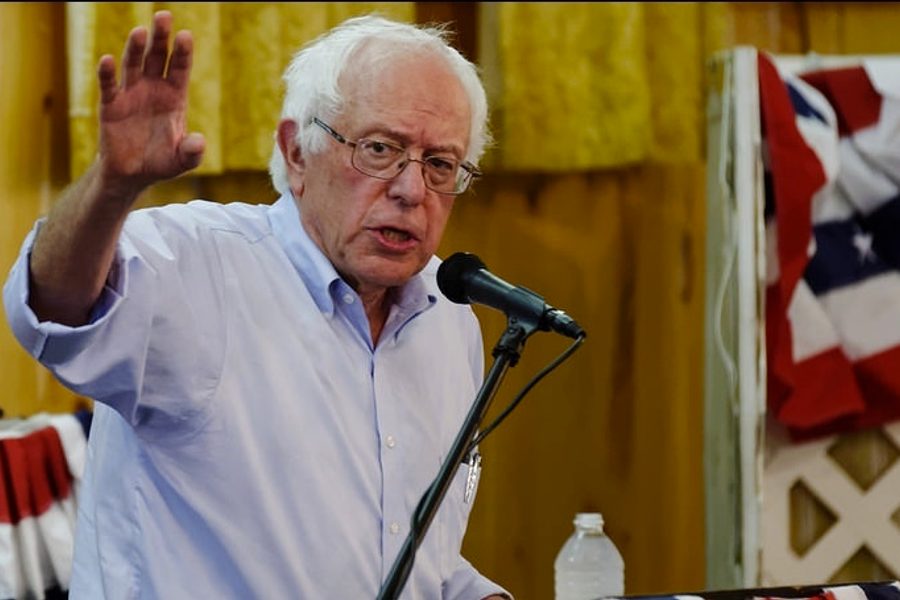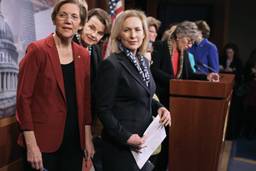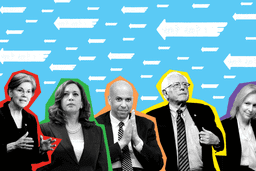Why Bernie Sanders Will Win This Election—Even If He Doesn’t Win the White House
American voters are mad as hell, and the rise of Sanders shows that they’re not going to take it anymore.
Theo Anderson

The good news is that the 2016 presidential race has become a “mad-as-hell” campaign. The better news is: Bernie Sanders will win it.
Campaigns of the mad-as-hell type are rare in our American politics. The past five presidential election seasons — stretching from Bill Clinton’s victory’s in 1996 re-election campaign to Barack Obama’s re-election in 2012 — were business-as-usual affairs, leading to relatively modest tacks to the left or the right. Such election seasons change the parties’ priorities and the themes that dominate our political discussions in fundamental ways. The electorate decides, as the protagonist of the 1976 movie Network did, that it isn’t going to take this anymore.
Obama’s 2008 “hope-and-change” campaign came close to the mad-as-hell type. There were certainly nods to Democratic anger over eight years of George W. Bush. But the issue that dominated the election cycle, and the greatest change that emerged from Obama’s victory, was health care reform that relies heavily on private insurance companies — a modest tack to the left that mostly reaffirmed the status quo. And while George W. Bush did govern as a right-wing radical in many ways, he explicitly ran on a platform of pragmatic, “compassionate conservatism” in 2000. It was September 11, not the campaign, that cleared the path for a radical conservative agenda.
The last true mad-as-hell election season was in 1992, when Bill Clinton defeated the elder George Bush, who got 37 percent of the popular vote, and Ross Perot, who ran as an independent. Perot’s economic populism — his railing against that “giant sucking sound” created by jobs moving to Mexico — and emphasis on fiscal austerity won 19 percent of the vote. For Perot, the national debt was the root of all evil, and reigning in out-of-control federal spending was our most urgent challenge.
Republicans took note of Perot’s success and rode the austerity theme to victory in the 1994 midterm election, promising “a comprehensive audit of Congress for waste, fraud or abuse” in their Contract with America. The GOP’s landslide in the House — the party picked up 54 seats — was a prelude to Clinton’s declaration of the death of big government in his 1996 State of the Union address, and his signing of the bipartisan welfare-reform bill later that year.
The 1992 campaign also gave us Patrick’s Buchanan’s “religious war” speech, which stoked religious conservatives’ mounting anger over abortion, gay rights, and what they viewed as the general secularization of American society. “In [the] struggle for the soul of America,” Buchanan told the Republican National Convention audience, “Clinton and Clinton are on the other side, and George Bush is on our side.” Three years later, the director of the Christian Coalition, Ralph Reed, appeared on the cover of Time beside the headline “The Right Hand of God.” The organizing muscle of the Christian Coalition and similar faith-based groups would play a key role in Bush’s election in 2000.
The other mad-as-hell election season in postwar politics was in 1968, when Richard Nixon defeated Hubert Humphrey and independent George Wallace, who won 13.5 percent of the vote with his explicitly racist defenses of states’ rights. Nixon’s more veiled racial appeals initiated the GOP’s current incarnation as a party dominated by Southerners, religious conservatives and older white people. In 1968, they were mad as hell about civil rights protestors, antiwar protestors, feminists and, as they saw it, the general collapse of law and order. This coalition of working class whites — Nixon’s “silent majority” — and the newly Republican solid South became the catalyst for Ronald Reagan’s election in 1980, a victory made possible by strong support from Nixon’s “silent majority” of working-class whites.
Mad-as-hell election seasonss aren’t defined by the party nominees, who are typically centrists like Bush, Clinton, Nixon and Humphrey. They’re defined by the surge of reformist energy that they both channel and generate. Such elections overflow the boundaries of our normal politics and reshape the priorities of the major parties over the course of several elections.
The most obvious evidence that this is a mad-as-hell election season comes from the GOP, notably from Donald Trump — but also from several second-tier candidates, including Ted Cruz, Scott Walker and Ben Carson. Some of their themes — like their attacks on reproductive rights and LGBT equality, and their strident defense of “Christian America” — have been consistent parts of the Republican playbook for decades. But Trump’s revival of anti-immigrant policy proposals has been the most potent force on the Right — and the most surprising. A party whose future depends on attracting more minorities is flirting with a self-styled “truth-teller” whose rhetoric and policy proposals are incoherent nonsense — and so deeply offensive to Hispanics that his net favorability rating among them is negative 51 points (a rating that will likely only continue to slide after Trump’s recent ejection of Univision anchor Jorge Ramos from a press conference).
For that reason, Trump’s campaign is more likely the last stand of the GOP’s most fervent base than a sign of its strength. He will go on drawing huge crowds because “people are super tired of politicians,” as Howard Stern put it recently, and because an anti-establishment business leader with charisma will always charm a certain segment of the electorate. One who aggressively pushes their hot buttons will thrive, at least for a time.
But it’s Bernie Sanders, not Donald Trump, who represents the future, and it’s Sanders who is channeling the pent-up, reformist energy that will reshape our politics over the coming decades. He is, as David Shribman wrote recently for RealClearPolitics, “a man on fire,” and his message is perfectly in tune with the times. “This is where a good portion of the Democratic Party is today — proud of electing Barack Obama but disappointed he didn’t go far enough,” Shribman writes, “skeptical of trade pacts, fired with revulsion about police excesses, convinced economic mobility is more a phrase from the American past than a touchstone of the American future, wary of half-steps on the economy and ritualistic bows to progressive issues.”
In other words: mad as hell.
That doesn’t mean that Sanders will win the nomination, much less the presidency. Nor does it mean that he’ll mount a third-party bid — something he has promised not to do. What it means is that he is galvanizing energies on the Left that can’t be contained by the party establishments, and whose effects will unfold over several election cycles.
Mad-as-hell elections may be won by the centrists rather than the insurgents. Yet in their wake, the entire political landscape is altered. After Nixon won the 1968 election, his attorney general, John Mitchell, famously predicted that the U.S. “is going so far to the right you won’t recognize it.”
If Trump’s candidacy symbolizes the dead, bitter end of our long march to the right, the Sanders campaign symbolizes a turning point in our politics and a fundamental shift in our priorities. Moving inequality and injustice to the center of our political discourse will make Sanders the winner of this mad-as-hell presidential campaign — no matter which candidate wins the White House next November.








